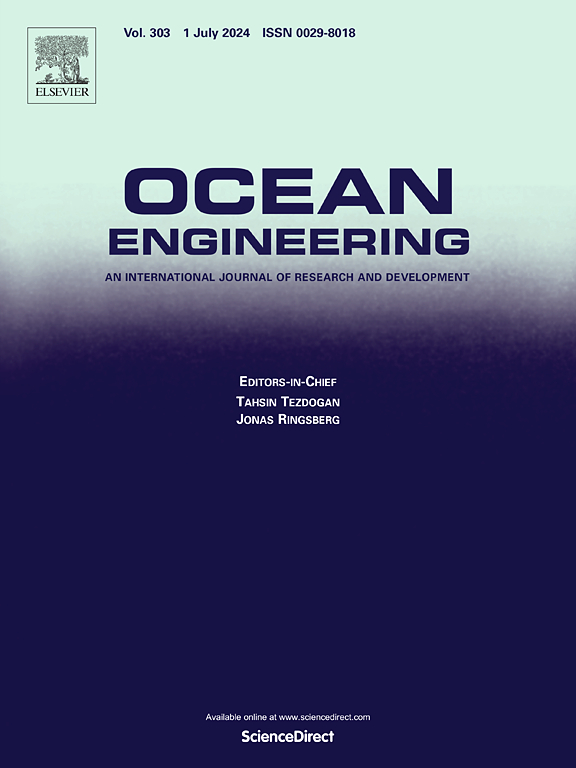Experimental investigation on the suppression of vortex-induced vibration of a rigid cylinder using axial slats
IF 4.6
2区 工程技术
Q1 ENGINEERING, CIVIL
引用次数: 0
Abstract
The study on suppression capabilities of axial slats on vortex-induced vibration (VIV) was carried out in a circulating water flume. This study aimed to find out the best combination of coverage ratio (CR) and gap ratio (GR) for the axial slats. The cylinders were set up to move in both cross-flow (CF) and in-line (IL) directions, with Reynolds number ranging from 7336 to 39346. Amplitude ratios, frequency ratios, lift and drag coefficients, trajectories and power spectral densities (PSD) were studied. A combination of CR = 0.3 and GR = 0.20 was found to be the best for axial slats to effectively suppress VIV, reducing up to 71.4 % of the CF amplitude of a bare cylinder. The best lift reduction of about 86.2 % was also found for axial slats of the same configuration. All axial slats configurations showed mean drag reduction compared to the bare cylinder, with the best reduction of 47.9 % for axial slats with CR = 0.3 and GR = 0.20. Additionally, GR was also found to have a greater influence than CR on the VIV suppression capability of axial slats.
轴向缝板抑制刚性圆柱涡激振动的实验研究
在某循环水水槽中进行了轴向板对涡激振动的抑制性能研究。本研究旨在找出轴向板条的覆盖率(CR)和间隙比(GR)的最佳组合。气缸被设置为在横流(CF)和直线(IL)方向上移动,雷诺数从7336到39346。研究了振幅比、频率比、升力和阻力系数、轨迹和功率谱密度(PSD)。结果表明,当CR = 0.3和GR = 0.20时,轴向板条能有效抑制涡激振动,可使裸圆柱的CF幅值降低71.4%。相同结构的轴向板的升力降低效果最好,约为86.2%。与裸圆柱体相比,所有轴向板条构型均表现出平均阻力降低,其中CR = 0.3、GR = 0.20的轴向板条构型最大降幅为47.9%。此外,GR对轴向板条抑制涡激振动能力的影响也大于CR。
本文章由计算机程序翻译,如有差异,请以英文原文为准。
求助全文
约1分钟内获得全文
求助全文
来源期刊

Ocean Engineering
工程技术-工程:大洋
CiteScore
7.30
自引率
34.00%
发文量
2379
审稿时长
8.1 months
期刊介绍:
Ocean Engineering provides a medium for the publication of original research and development work in the field of ocean engineering. Ocean Engineering seeks papers in the following topics.
 求助内容:
求助内容: 应助结果提醒方式:
应助结果提醒方式:


